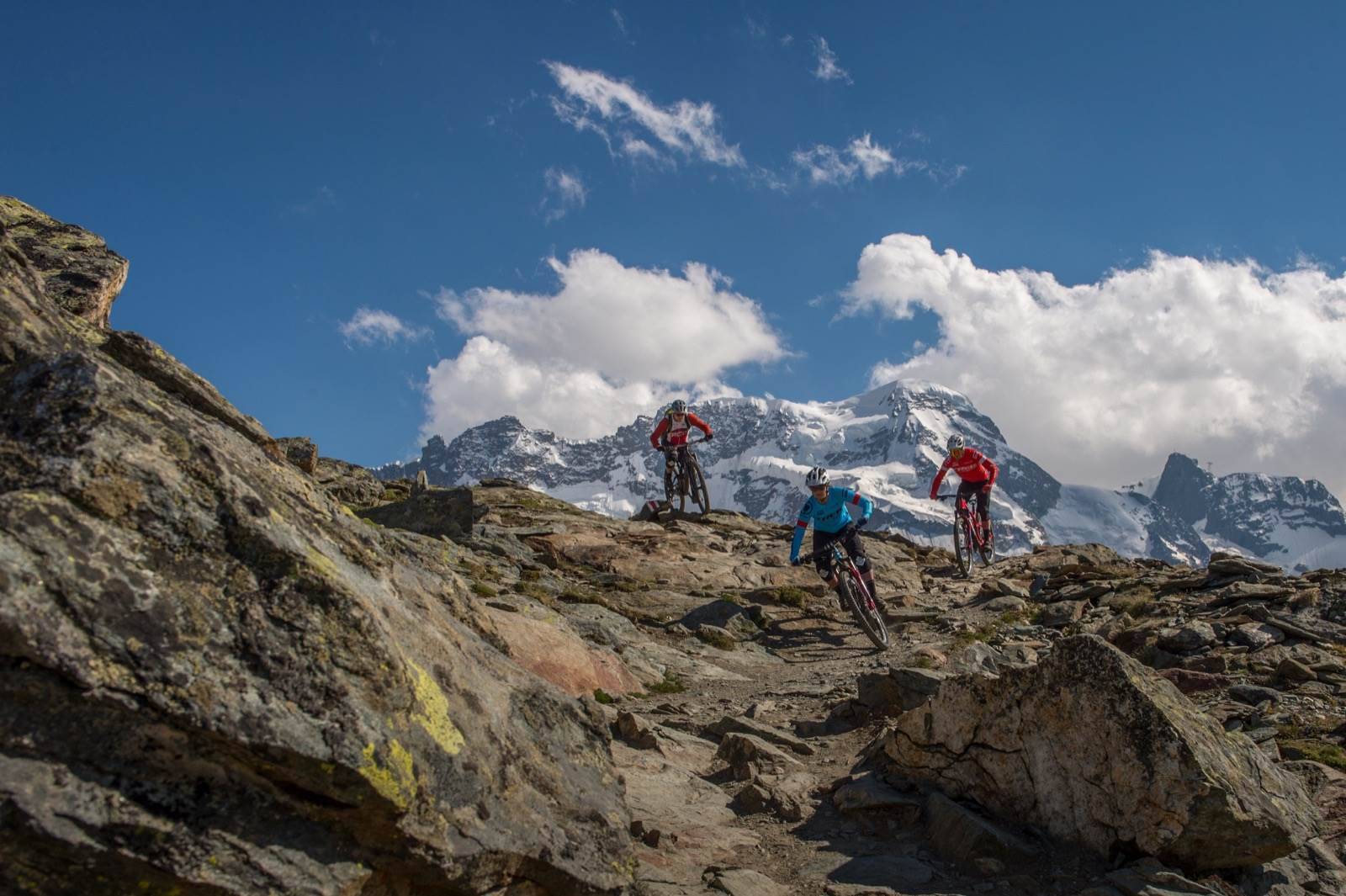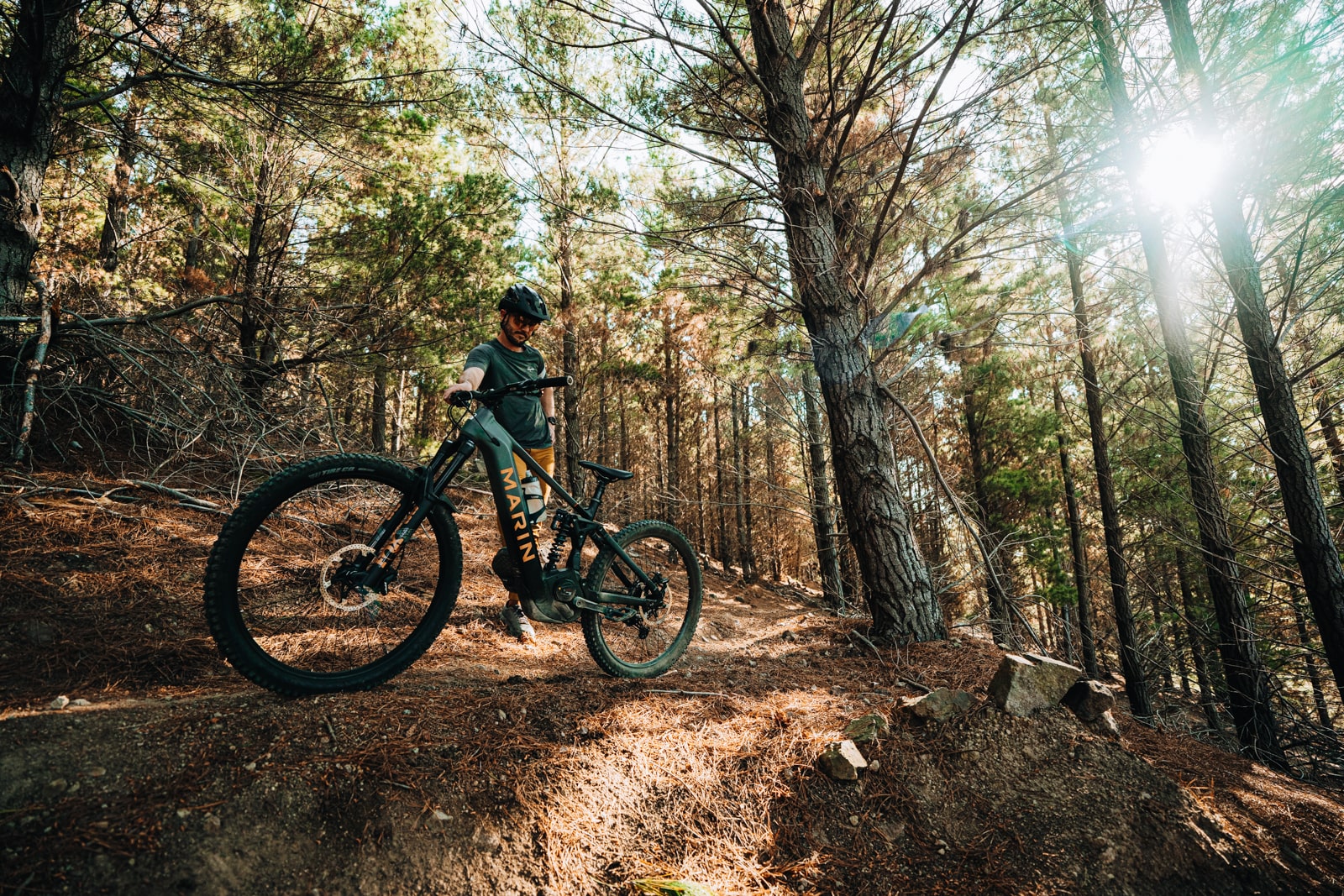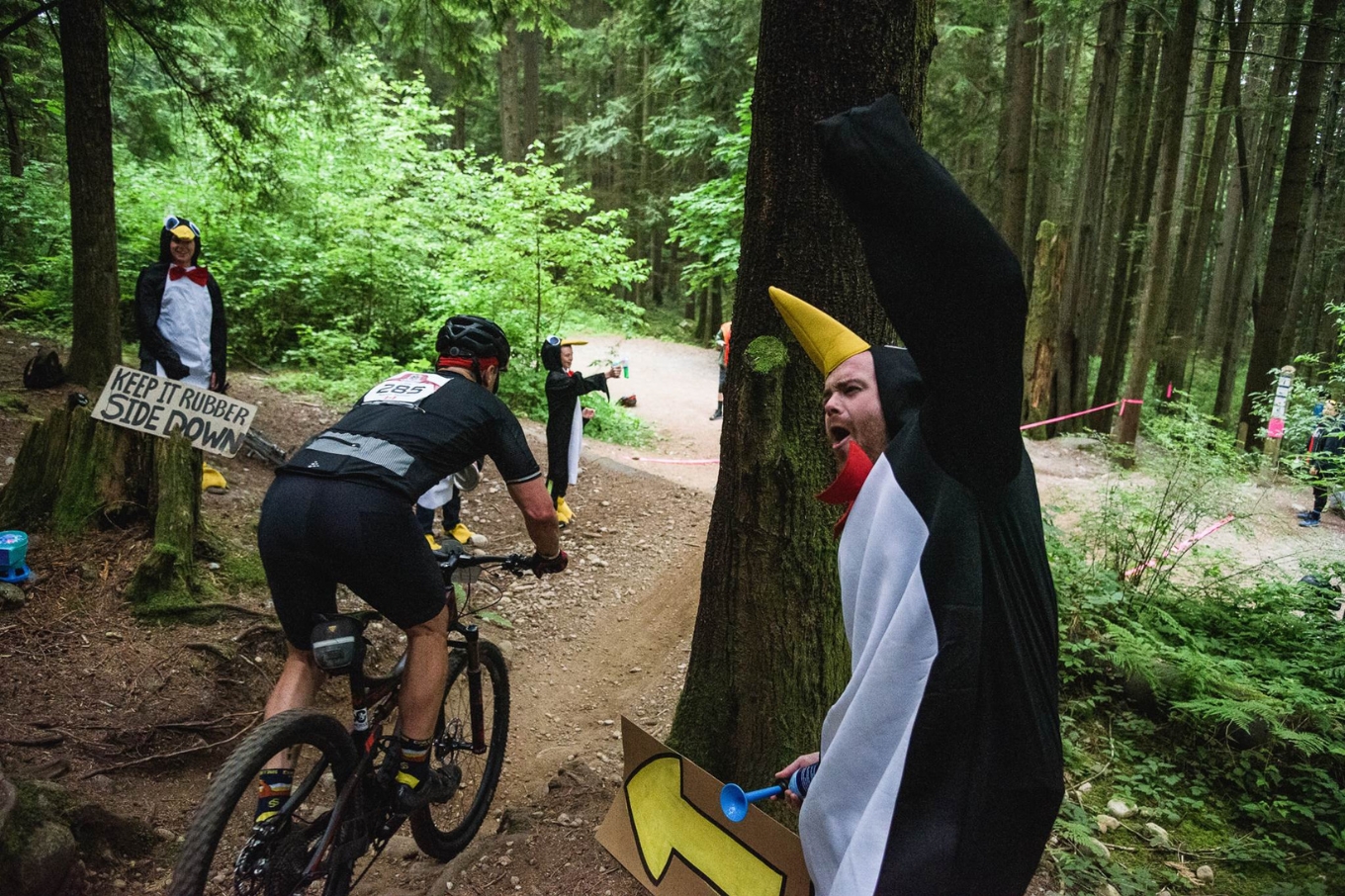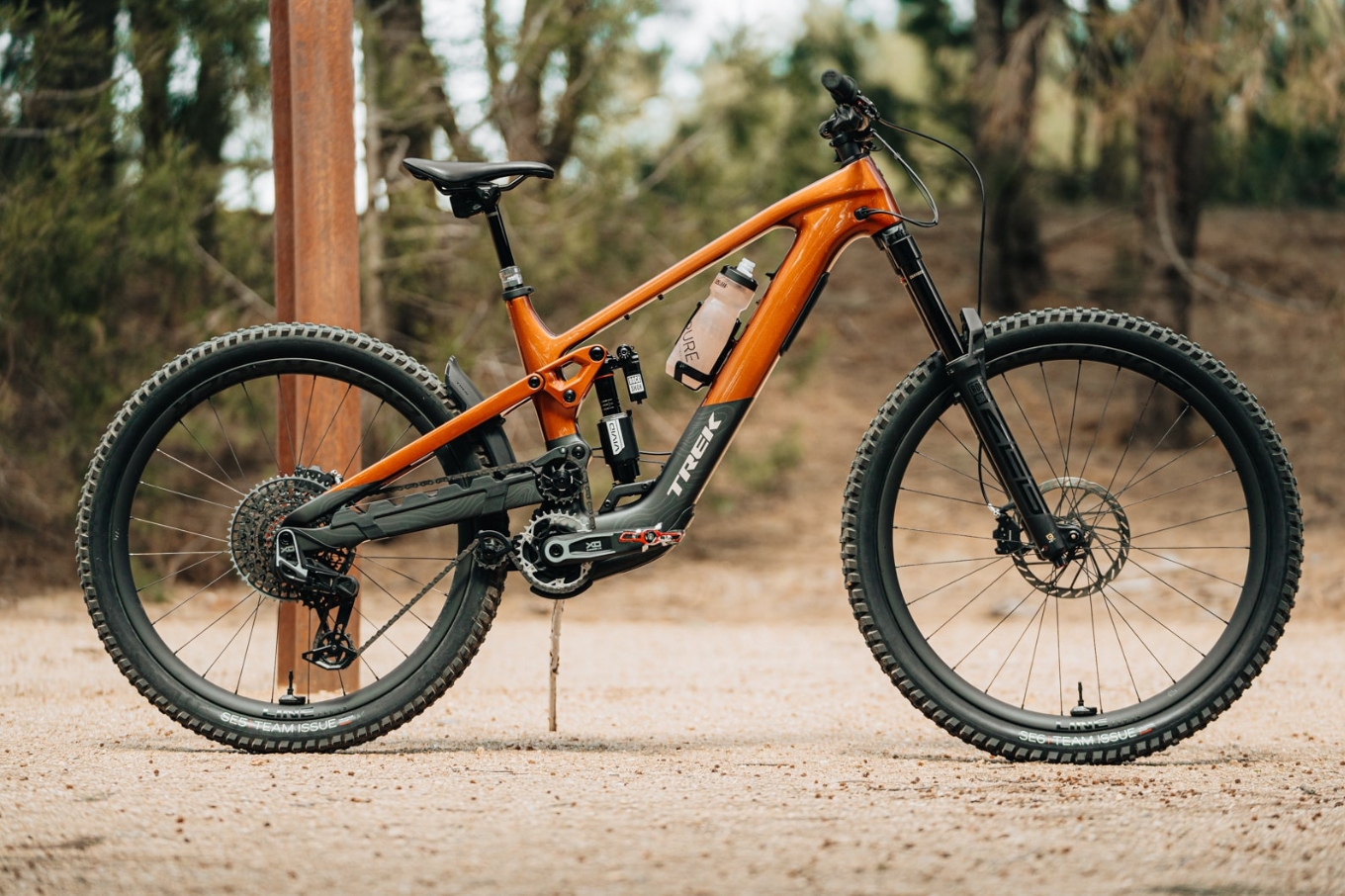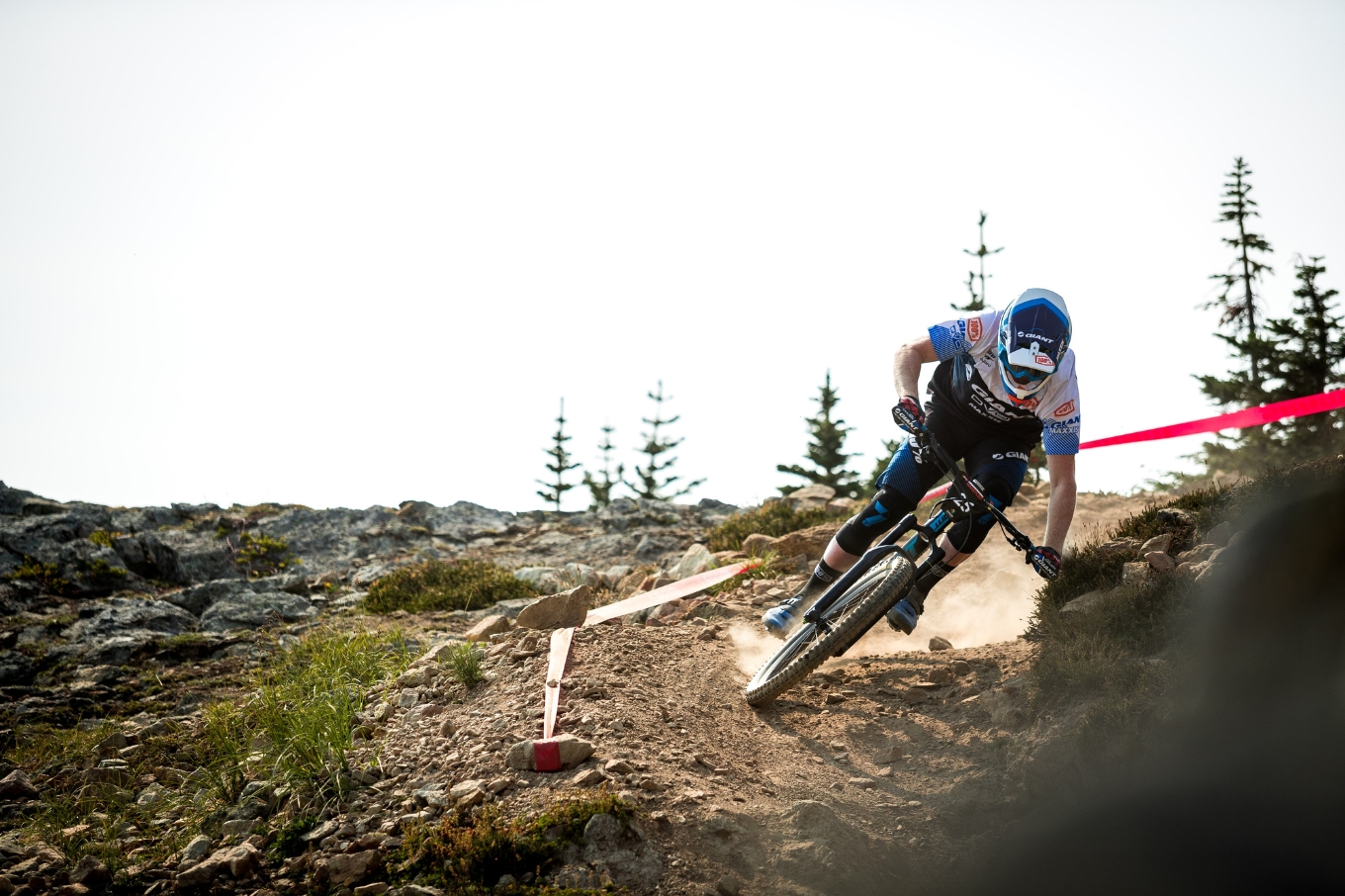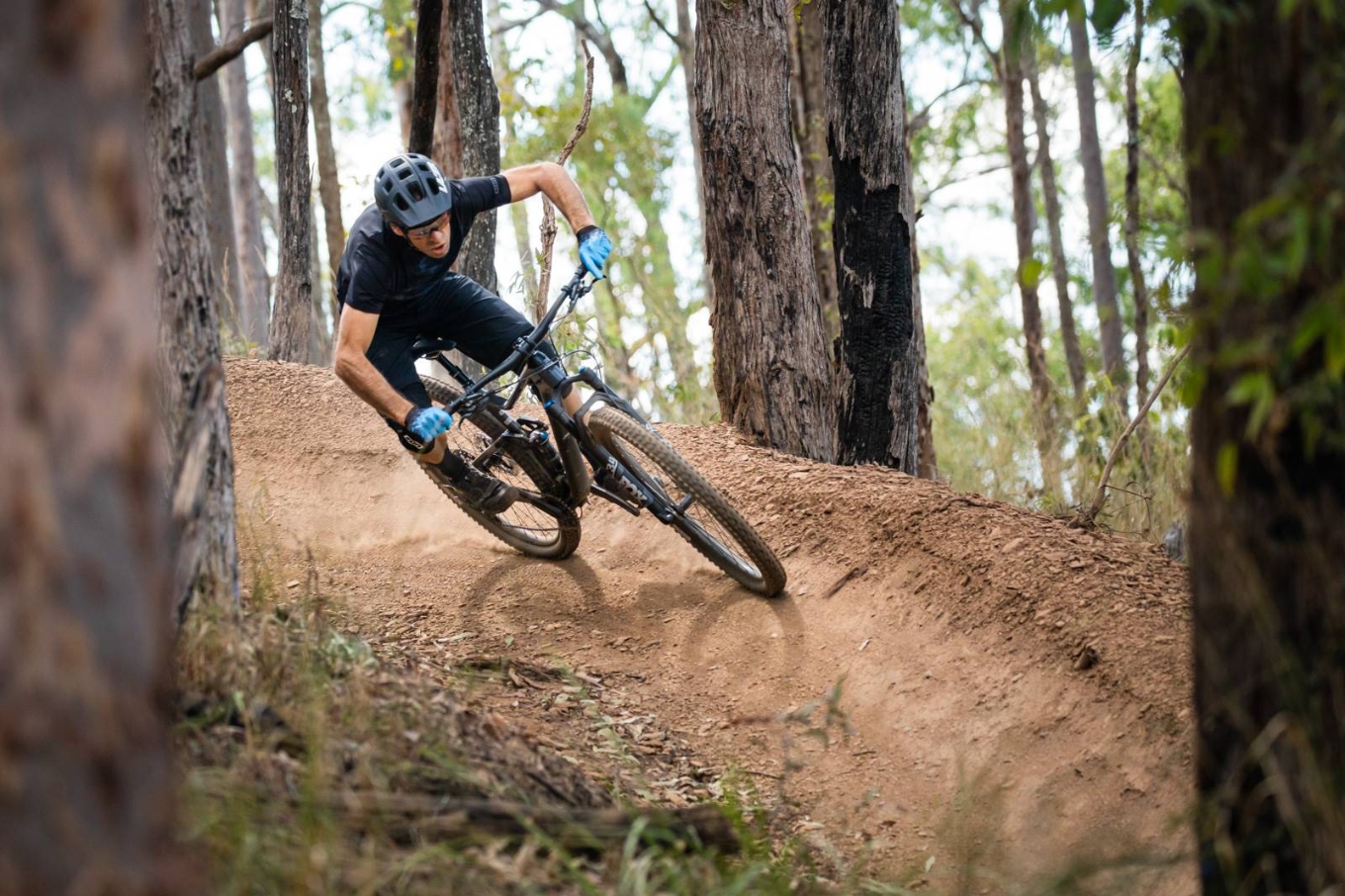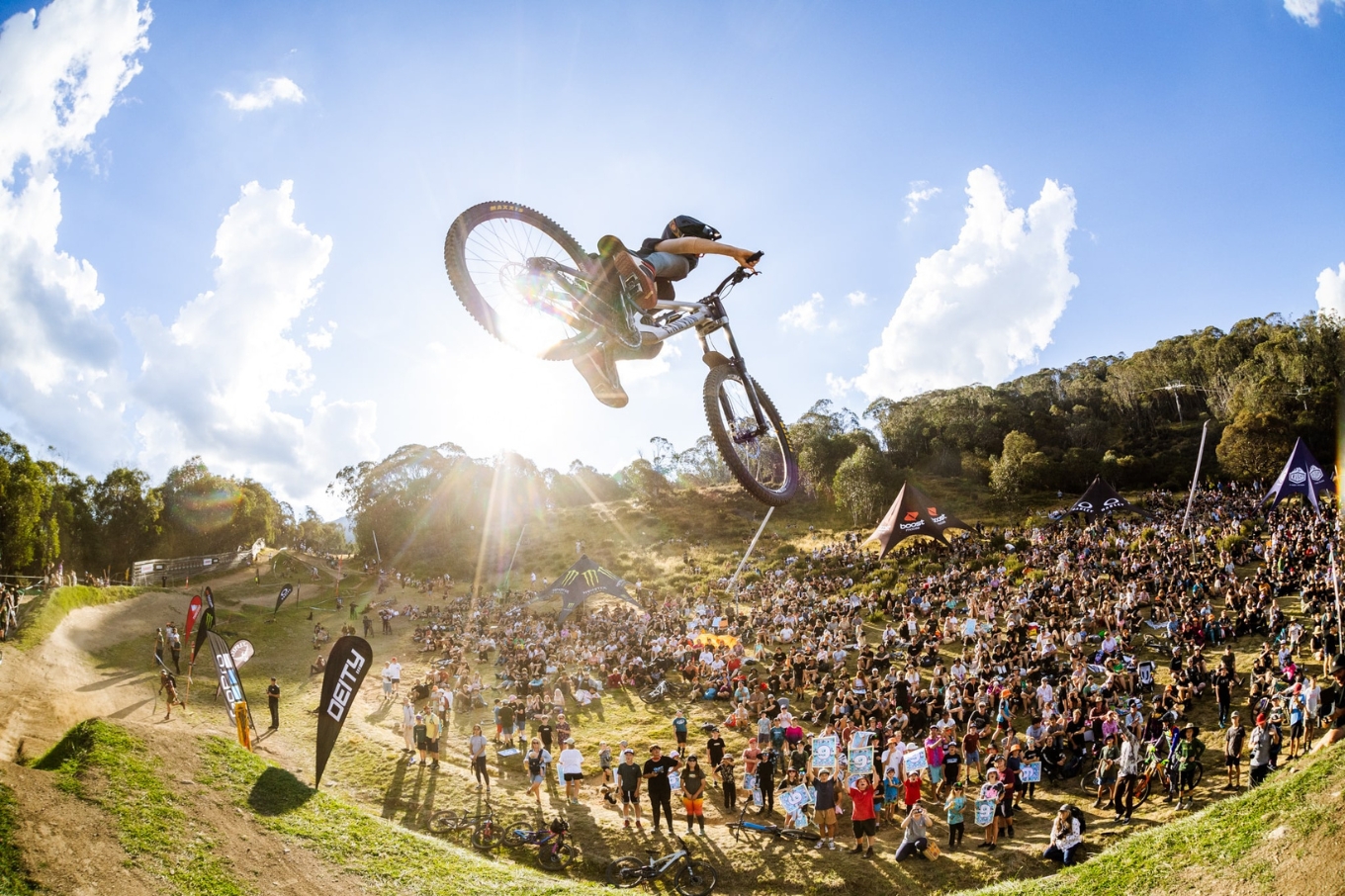The EWS in Zermatt
PART TWO: Our Zermatt feature looks at what is in store for the 2019 EWS!
Words: Mike Blewitt Feature Photo: Dario Furler
While our visit was to see the new trails – we also wanted to see what would be in store for the EWS next September, so we lined up a ride with some of the guides from Bike School Zermatt, who have played a key role in the event coming to Zermatt.
I head out one afternoon to look at two of the stages. I take the chairlift towards Glacier Paradise with guide Nik Wicki . We’ll be going beyond Schwarzsee, where bikes normally get lifted to, and travel another 500m higher.
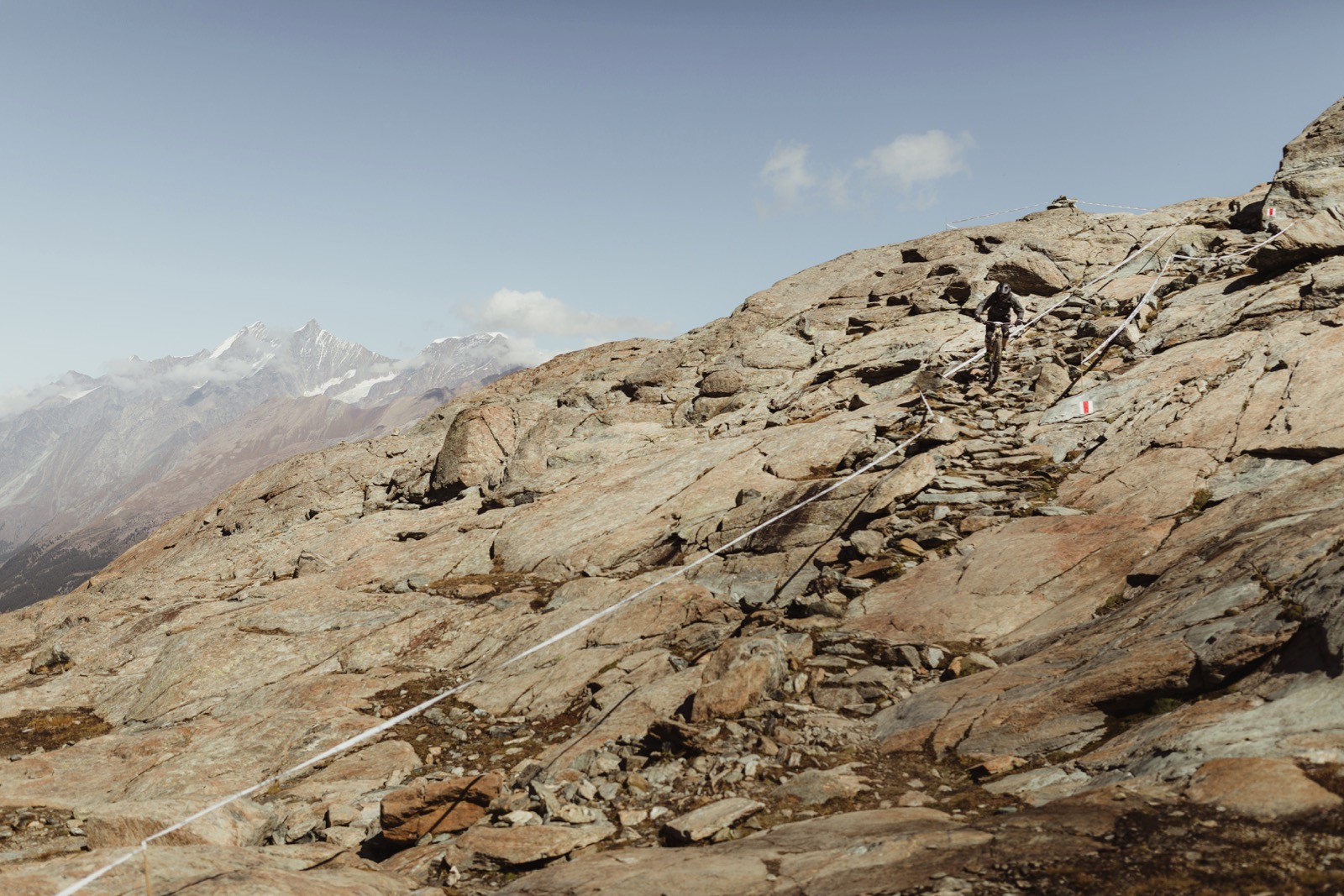
The EWS is known for visiting places that will not only test the riders on the world circuit – but also be beautiful places to ride. With the Matterhorn providing a near idyllic backdrop, it’s easy to see why Zermatt was chosen as a new destination. As we ride the gondola up the valley, we pass trails below us. Nik points out some that will be used, that were considered, and ones we will be riding back down shortly.
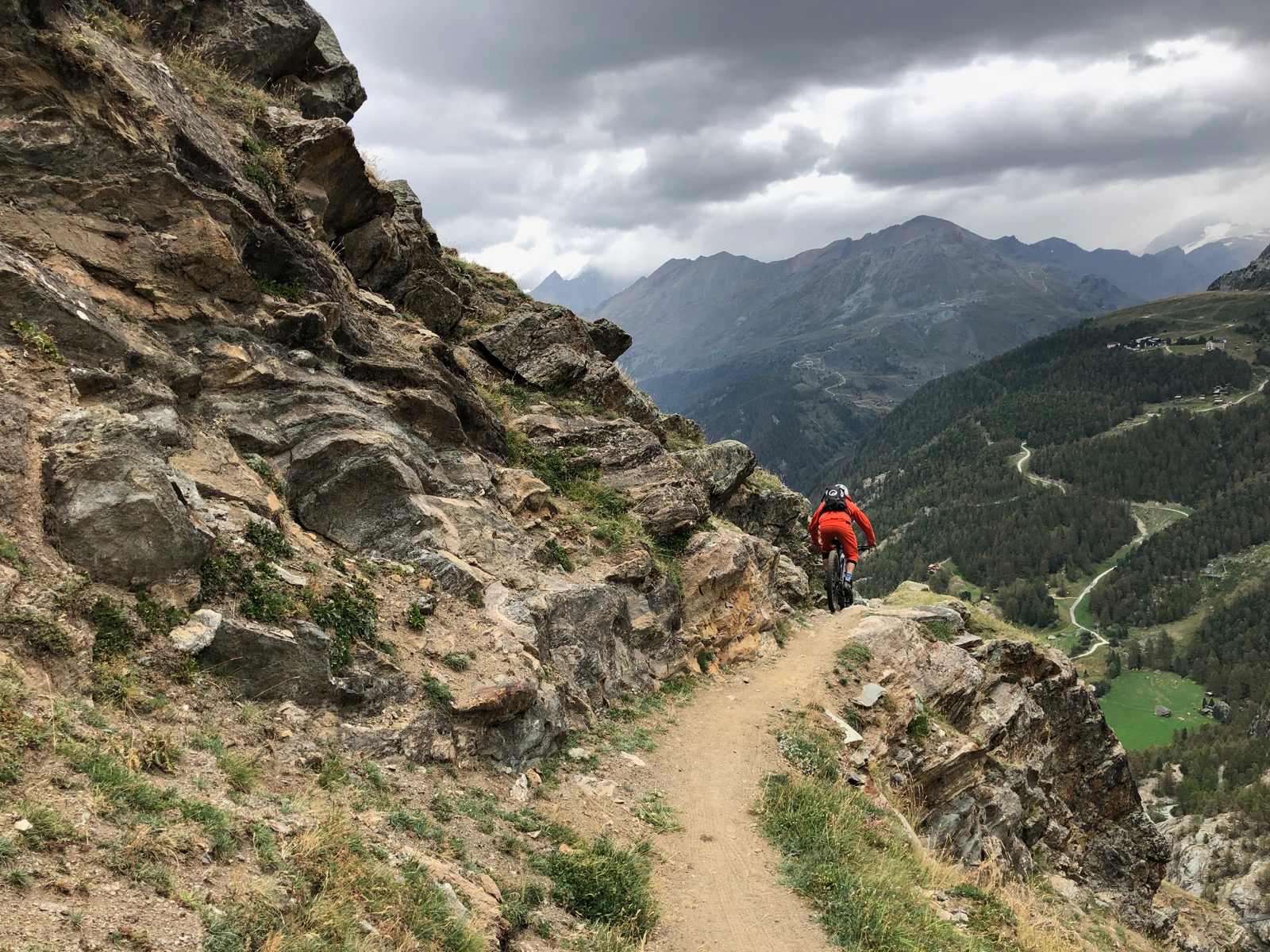
Thanks to the year-round mountain tourism, Zermatt has the facilities required for world-level events. From having enough hotel beds and restaurants through to access to mountain transport. There are plenty of trails and ski roads to climb to the start of stages, but as Nik from Zermatt Bike School says, “we don’t have to be the hardest to be the best – we have the facilities for excellent uplift.”

At this point, they are planning on having either 6 or 8 stages. And there will be one hard liaison stage up to the Rothorn, with about 500m vertical to climb. But that is from 2500m to 3000m – it will be a slog! Details on the descent from there weren’t confirmed, but if it’s through the valley off the back of the Rothorn you can bet it will be fast and exposed.
Nik explains that the mix of trails for the EWS will be a true alpine experience in Zermatt. From fast and open ski roads, tight natural trails, fast trails through the larch forests, exposed lines and then what we are about to tackle – lots of high alpine rock with wide taping so riders will be searching for the fastest lines.
We take our bikes out and I start to feel a little undergunned on a Rocky Mountain Instinct. It’s a hire bike that is a couple of seasons old, while Nik’s Trek Slash looks purpose-made for the riding in Zermatt!
We drop in from behind the lift, into eerie silence in the high alpine valley. Clouds are rolling in and it seems like everyone around has sought shelter. Rocks clatter beneath our wheels, as we follow the unmistakeable white and red trail marking paint that is painted carefully onto rocks just often enough to pick our way down.
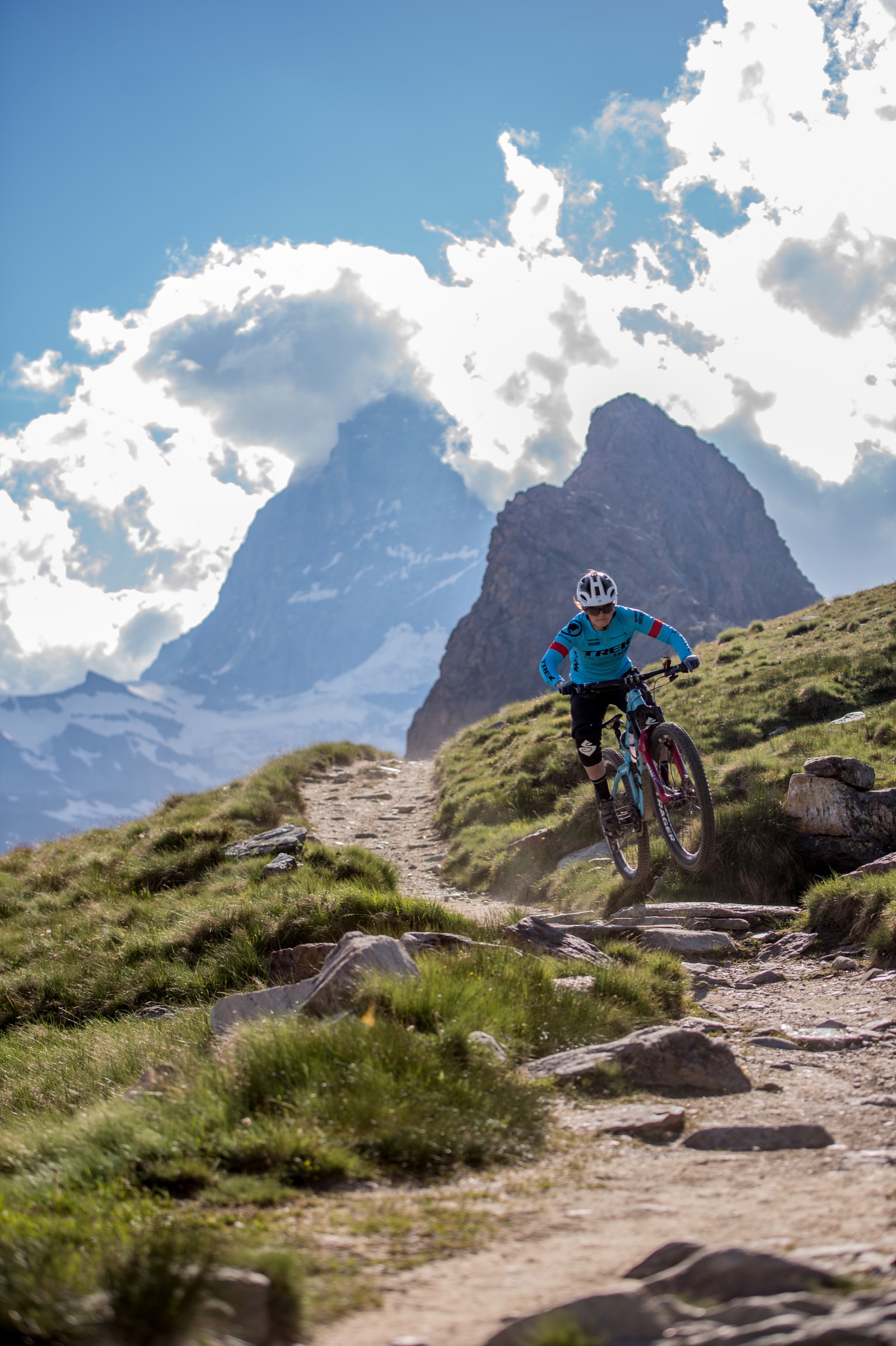
The trail transfers from well-trodden dirt to rock gardens made from very weathered rock. Zermatt is ahead of us, about 1300m lower. Sometimes it is steep, sometimes it’s flatter. We choose lines that we can ride blind, but with a day of practice top-level riders will absolutely storm down here.
As we descend, playing point and shoot down the steeper sections, the trail hits a meadow for some awesome lines and corners, with the trail sunken into the dirt over the passage of time. The altitude loss here is so immense that you descend through eco systems. Life is much happier below 2200m.
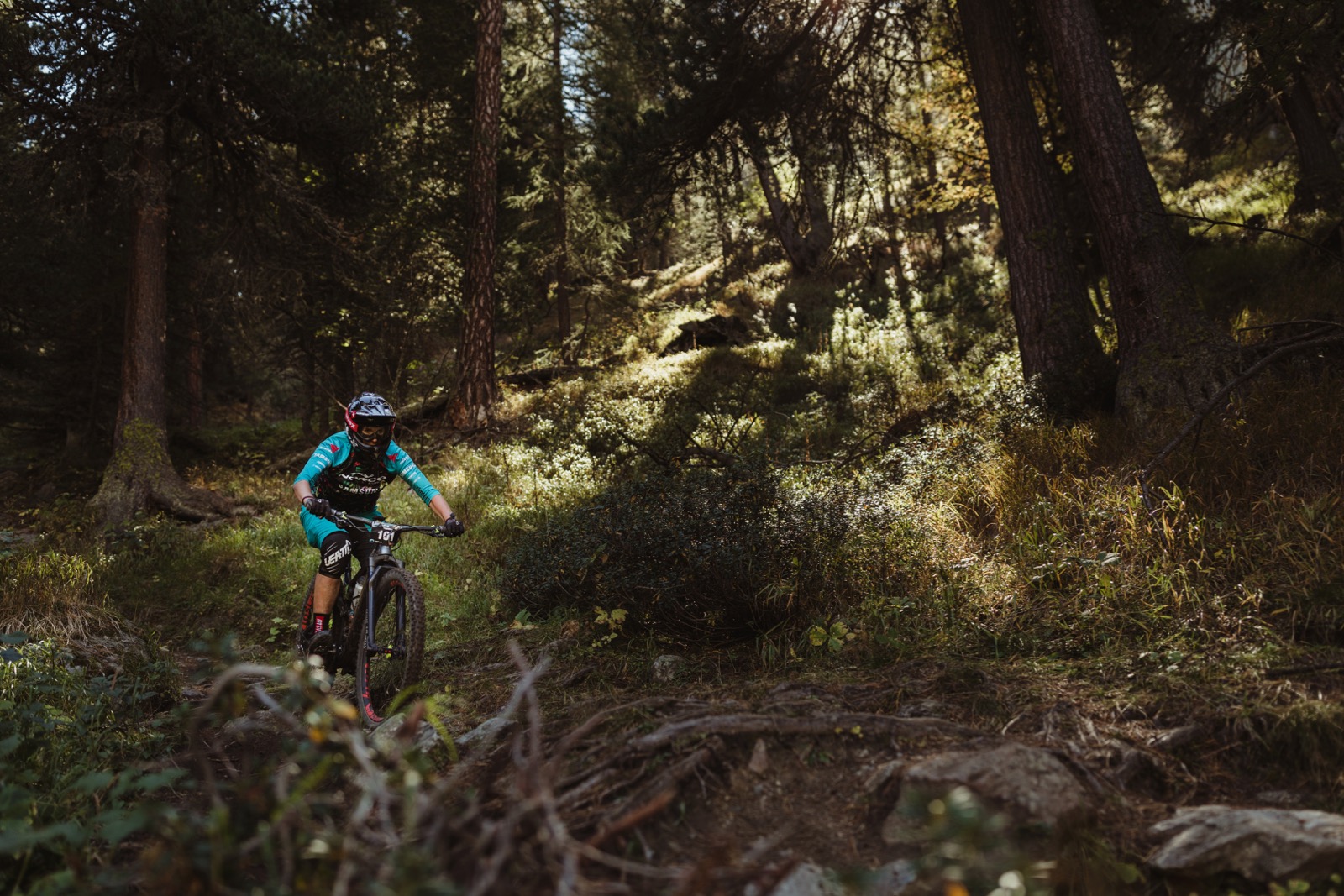
We pop out onto the top of a ski road, and Nik tells me that what we just rode will be Stage 1. It’s likely to be about 5 or maybe 6 minutes of descending, and leaves riders in ready for stage two, a fast, flat out and drifting run down an impossibly steep ski road. I take off after Nik, although we only go partway before making a traverse into a crazy lone line of bench cut singletrack, leaving the proposed stage as what lay ahead would need some serious work.
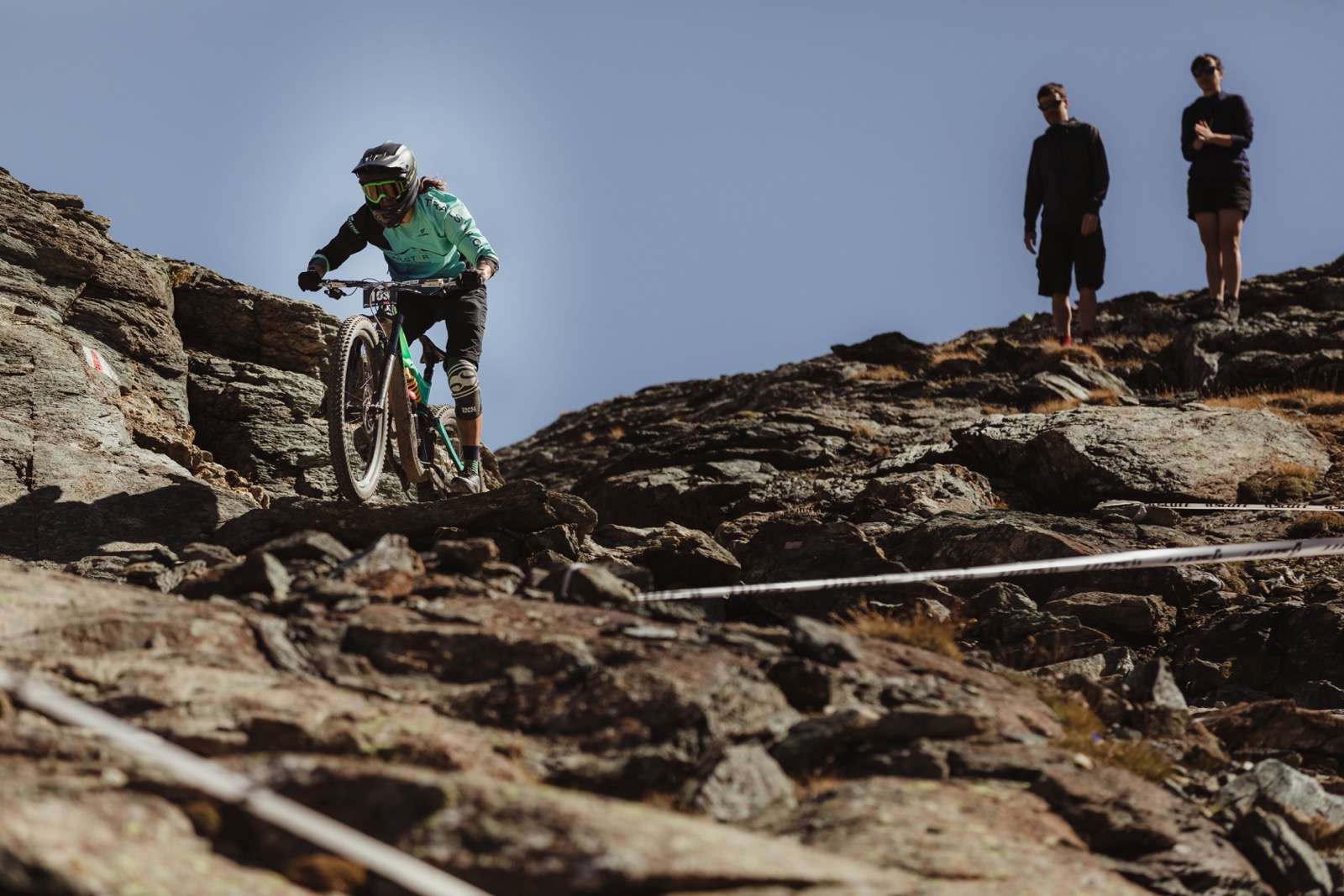
The singletrack we ride cuts across the slope in front of us. It is steep enough that you see the trail drop away but have no idea what lies beyond, you just see it carry on in the distance. There’s no catch netting, no caution signs, just excellent trail beneath our tyres. But with only about the width of your bars to play with, the risk is high for a small mistake. And that is something that is right at the front of my mind as we go down small rock chutes and steps.
We descend into the forest, taking turns through the larch trees, feeling tyres slide in the dry dirt that will quickly become tacky as rain has started to fall. We pass around the back of small huts, drop onto a tiny road and then enter the Moos trail – the short flow trail that was a first for Zermatt. It’s fast, hard packed, and a roller coaster that takes us further down the valley.
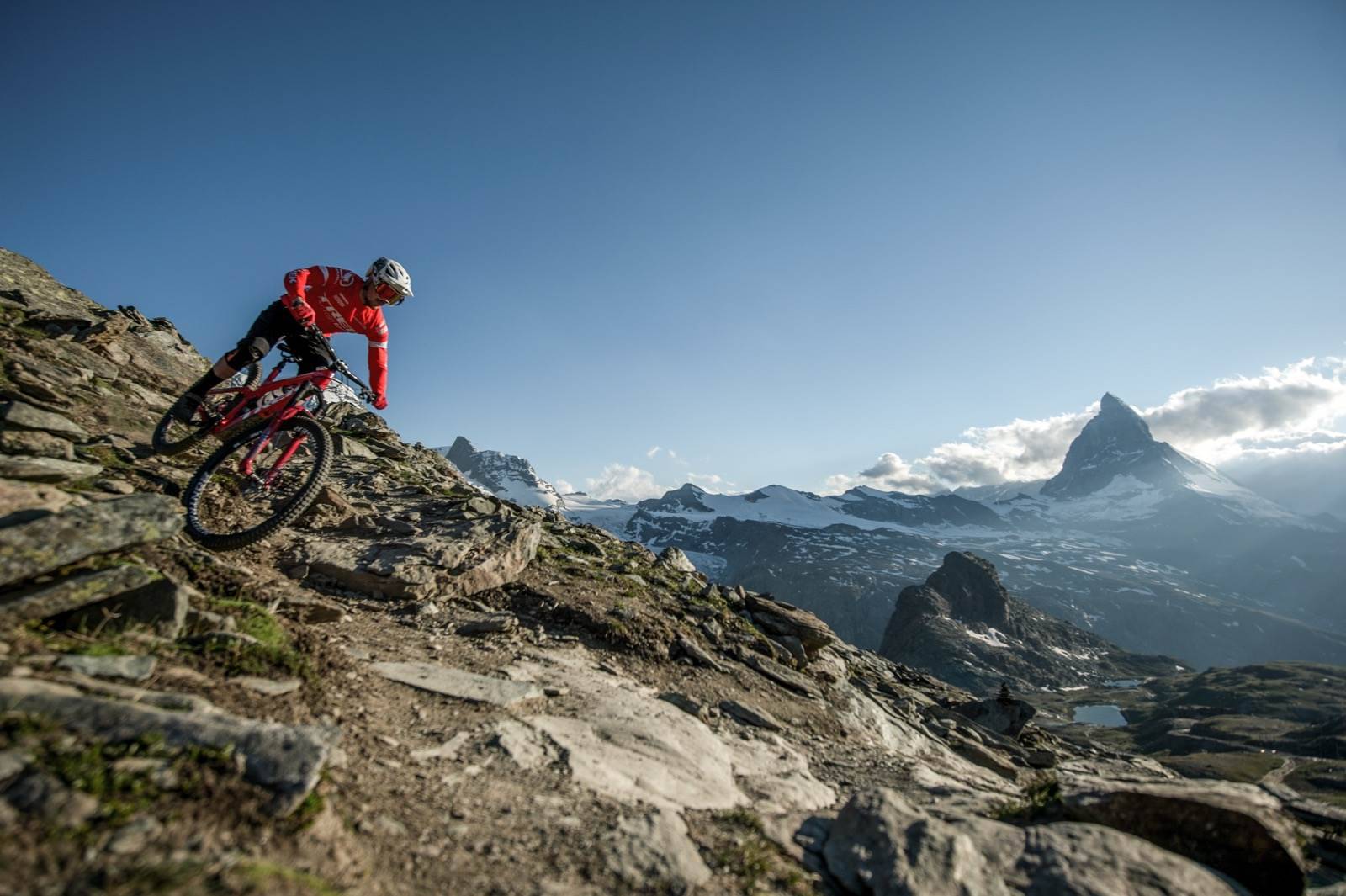
“None of the flow trails will be used in the EWS,” says Nik. “the pros will just go way too fast on them – it wouldn’t be safe.” But it’s not like they would need to use them to get enough trail. The flow trails are a great addition to the riding in Zermatt, offering a chance to pump through the terrain on the machine-built trails.
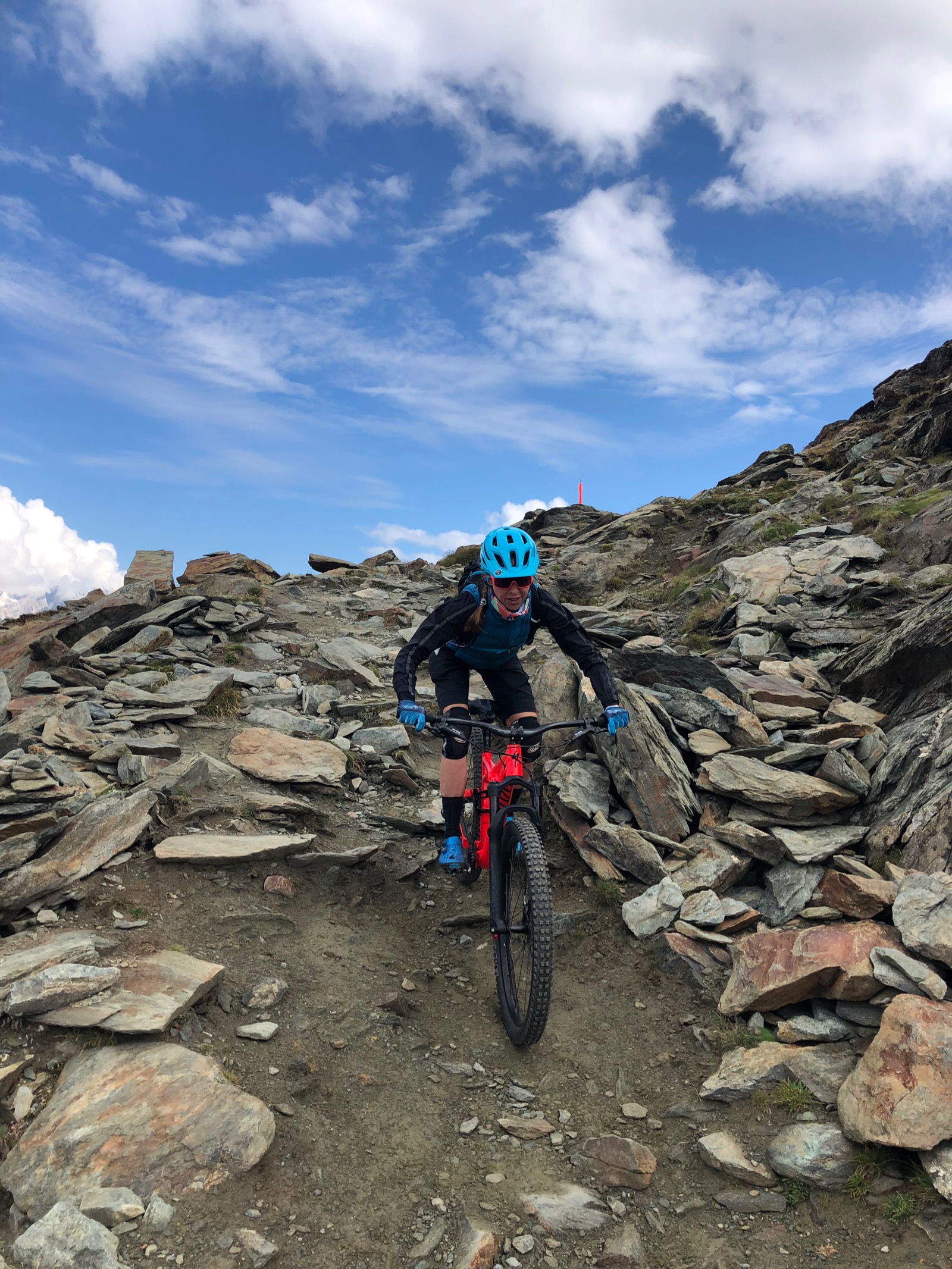
“All the riders in Zermatt are so good at going fast straight downhill, but we learned that plenty of local riders don’t know how to pump!” Nik laughed, about the transition to adding flow trails into the Matter Valley. Given there are 400km of hiking trails open to ride, one of the big benefits is reduced user conflict on the trails. “It’s cultural,” says Nik. “The hikers still feel like they own the trails, but of course it’s the farmers who made them all.”
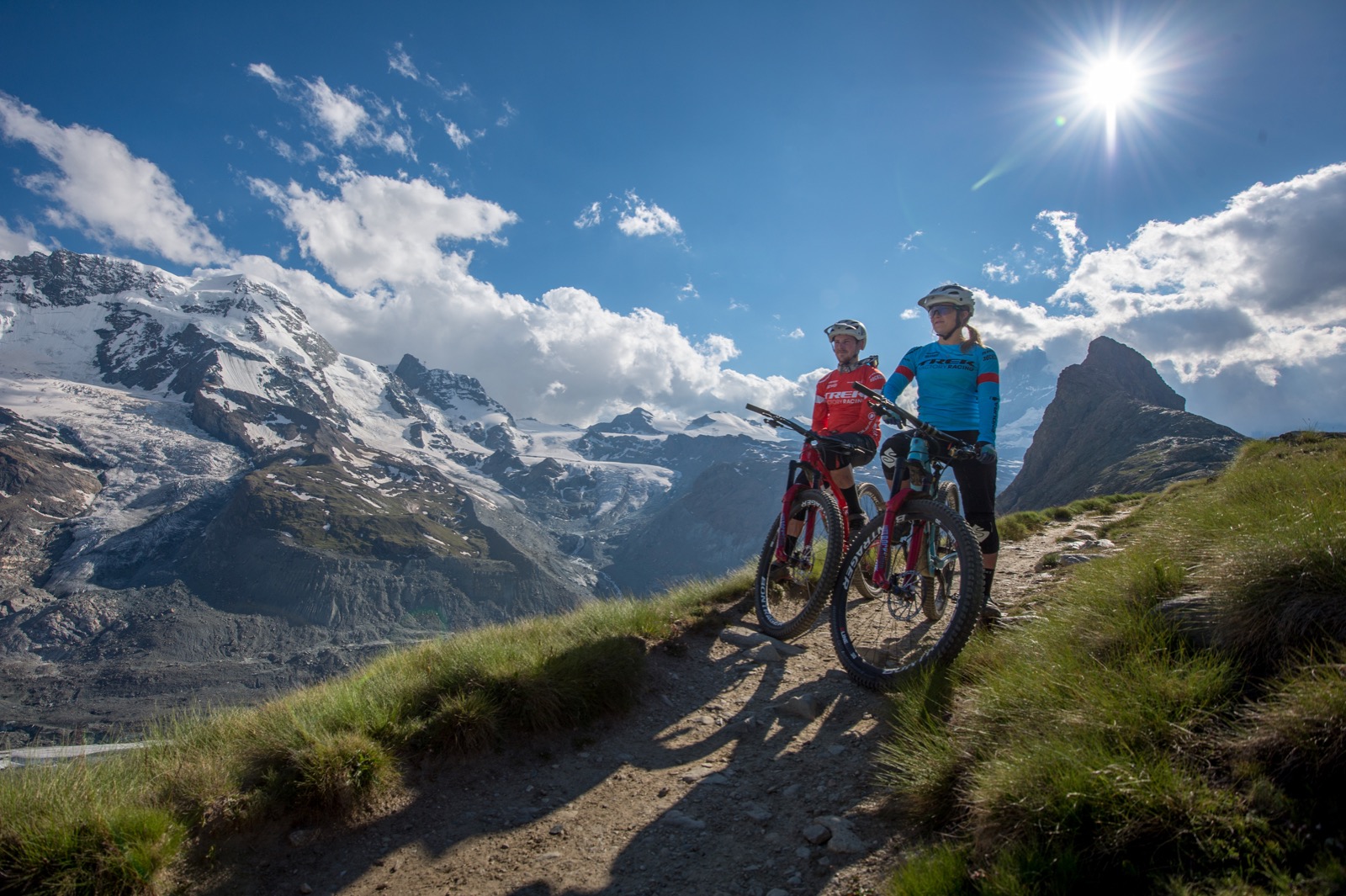
The final trail selection will be clearer before the event, but I think the EWS has found an ideal new home for the series final in Zermatt. With so many trails on offer it means that if you’re not racing, just spectating, you won’t be limited on how much you can ride. Sure, the stages won’t be accessible on race day, but you would be hard pressed to ride all the 400km of open trails on a visit here – and best of all, the new flow trails will be yours alone to ride all day long.

